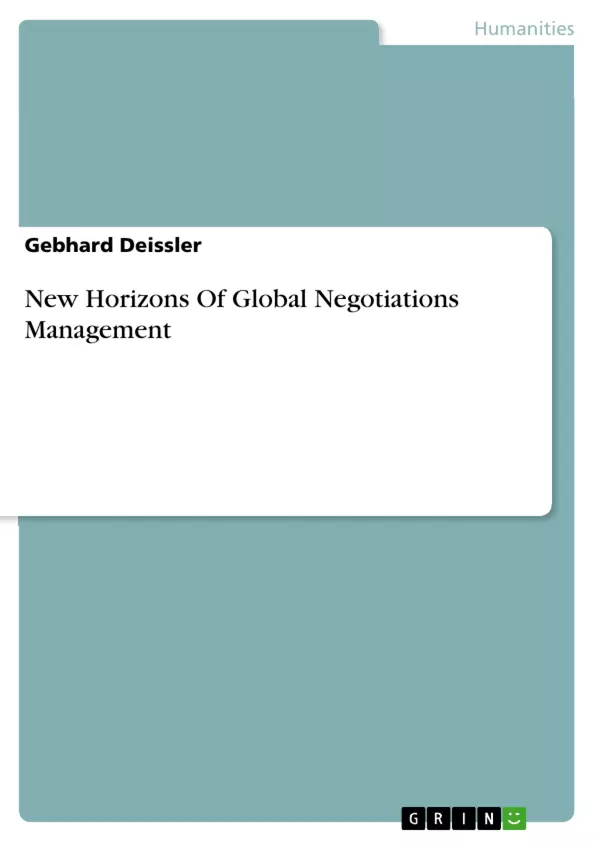In the ligth of international imperatives and requirements there is a need to develop new negotiation approaches that are more effective and less costly than tranditional problem solving methods, in human as well as in monetary terms. Here is a response to this need of our age.
Inhaltsverzeichnis (Table of Contents)
- The State-Of-The-Art Of Negotiating Globally
- Beyond Harvard?
- The Transcultural Profiler and the Quest for Transcultural Management and Negotiation Intelligence
- 360° Transcultural Synergy: Enhancing Negotiation Strategy and Synergy
- A Method for the Management of the Diverse Cultural Profiles of Negotiation Partners and Parties
Zielsetzung und Themenschwerpunkte (Objectives and Key Themes)
This book aims to explore the complexities of global negotiation, moving beyond traditional approaches and integrating them within a broader transcultural framework. It focuses on developing a comprehensive understanding of transcultural management and negotiation intelligence.
- The importance of transculturalism in global negotiation
- Developing a transcultural profiler to understand diverse cultural profiles
- Strategies for enhancing negotiation strategy and synergy through a transcultural lens
- Methods for managing the diverse cultural profiles of negotiation partners
Zusammenfassung der Kapitel (Chapter Summaries)
- The State-Of-The-Art Of Negotiating Globally: This chapter establishes the context for the book, discussing the existing literature on international negotiation and the limitations of traditional intercultural approaches. It introduces the concept of transculturalism and its potential to enhance negotiation outcomes.
- Beyond Harvard?: This chapter challenges traditional negotiation models, arguing for a more comprehensive approach that incorporates transcultural perspectives. It examines the limitations of existing frameworks and paves the way for a more holistic approach.
- The Transcultural Profiler and the Quest for Transcultural Management and Negotiation Intelligence: This chapter introduces the concept of the transcultural profiler, a tool for understanding and managing diverse cultural profiles in negotiation. It explores the importance of transcultural management and negotiation intelligence in global contexts.
- 360° Transcultural Synergy: Enhancing Negotiation Strategy and Synergy: This chapter delves into the practical application of transcultural principles in negotiation. It explores strategies for leveraging diverse cultural perspectives to enhance negotiation strategy and achieve synergy.
- A Method for the Management of the Diverse Cultural Profiles of Negotiation Partners and Parties: This chapter outlines a practical method for managing diverse cultural profiles in negotiation. It provides insights into the complexities of cultural differences and offers practical tools for navigating these differences effectively.
Schlüsselwörter (Keywords)
Global negotiation, transculturalism, intercultural negotiation, transcultural management, negotiation intelligence, cultural profiles, negotiation strategy, synergy, cultural diversity, intercultural communication, international business.
- Quote paper
- D.E.A./UNIV. PARIS I Gebhard Deissler (Author), 2011, New Horizons Of Global Negotiations Management, Munich, GRIN Verlag, https://www.grin.com/document/182313



